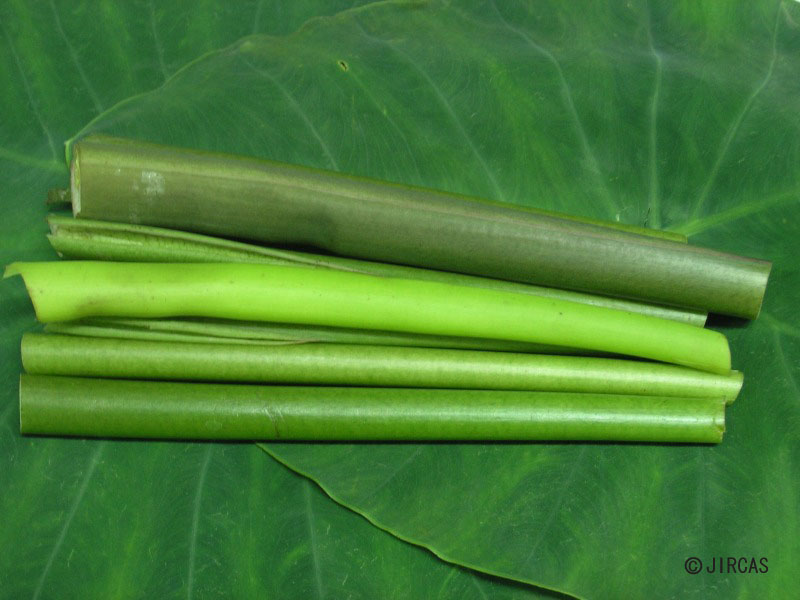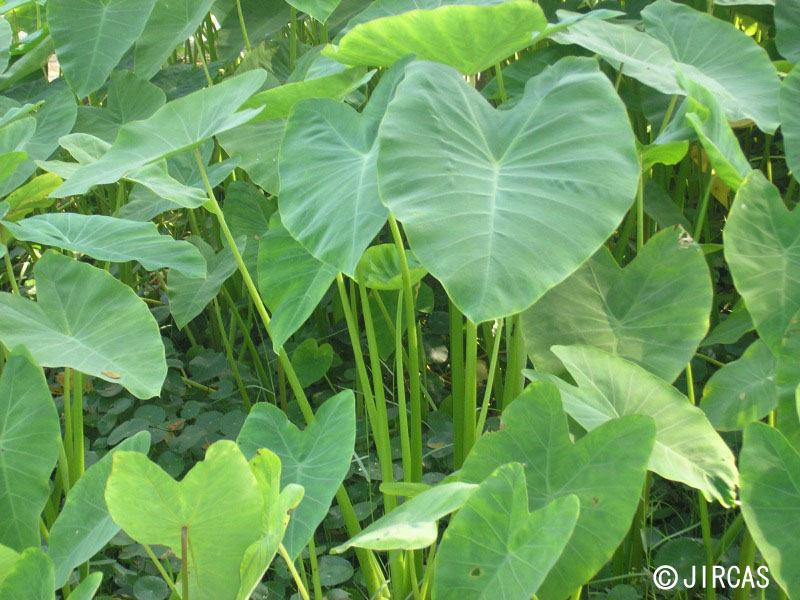Colocasia esculenta (L.) Schott (Araceae)
- Scientific name
- Colocasia esculenta (L.) Schott
- Family name
- Araceae
- Common name
- Wild taro (English); satoimo (Japanese)
- Local name
- Bon
Erect perennial herb, up to 1 m or taller, storage stem (or corm) solid, cylindrical or spherical, up to 30 × 15 cm., usually brown, with lateral buds above leaf scars. Leaves peltate, consisting of a long petiole and large, heart- shaped blade, 20–50 cm long. Inflorescence a spadix, subtended by a yellow spathe, peduncle shorter than petiole. Flowers unisexual, small, sepals and petals absent; female flowers at base of spadix, green, separated from male flowers; spadix terminated in a sterile appendage. Ovary unilocular, up to 67 ovules. Infructescence of densely packed berries. Seeds less than 2 mm long, ovate, conspicuously ridged longitudinally.
Grows naturally in wet places such as riverbanks, at elevations from sea level to over 1,000 m a.s.l. No records of wild taro cultivation in Thailand; however, it is propagated through suckers and can be planted in muddy areas. Thrives under full sun.
Young leaf stalks are collected year-round. The outer skin of the stalks is peeled before boiling with sour additives such as tamarind pulp. Stalks are commonly cooked in kaeng bon curry.
Caution: Toxic calcium oxalate crystals are abundant in wild taro leaf stalks, and should be eliminated through careful cooking. Some lines are less toxic, according to indigenous peoples.
Young leaf stalks are collected year-round. The outer skin of the stalks is peeled before boiling with sour additives such as tamarind pulp. Stalks are commonly cooked in kaeng bon curry.
Caution: Toxic calcium oxalate crystals are abundant in wild taro leaf stalks, and should be eliminated through careful cooking. Some lines are less toxic, according to indigenous peoples.





